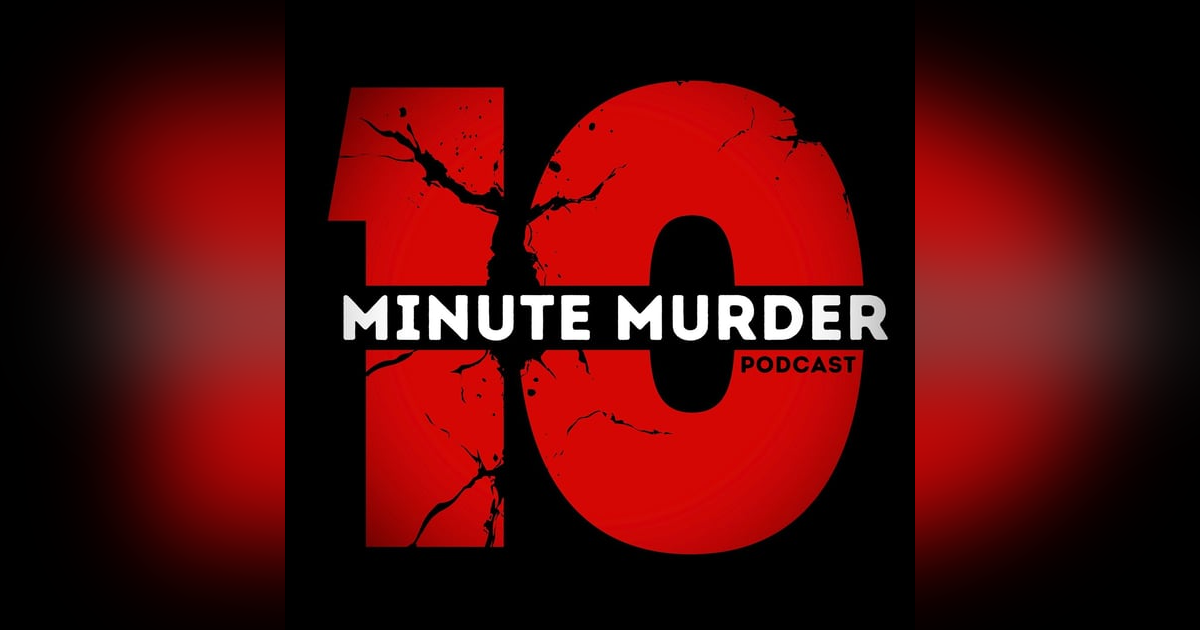How Arthur Gary Bishop Fooled a Community

Arthur Gary Bishop: The Predator Hiding in Plain Sight
Why is it that some of the worst people seem to come wrapped in the most respectable packaging? The clean-cut guy who smiles too much. The one who always volunteers. The one you’d trust to watch your kids.
Arthur Gary Bishop was one of those people.
Born in Salt Lake City in 1951, he looked like the poster child for doing everything right. Straight A student. Eagle Scout. Deeply religious. His whole family was active in the Mormon Church, and like many devout Mormons, Arthur didn’t head straight to college after high school. First, he went on a mission.
He spent about a year in the Philippines, trying to convert others to the faith. After that, he came back, enrolled in college, graduated with honors, and landed a solid job as an accountant at a car dealership run by fellow Mormons.
On paper, he had it all. Education, community, a decent job, and people who trusted him.
But Arthur Gary Bishop was hiding something. And it wasn’t small.
There was something deeply wrong with him. And no amount of churchgoing, scouting badges, or straight-A report cards could cover it up forever.
The Embezzler Who Became a Monster
The cracks started showing at Arthur’s accounting job. He was caught embezzling over $8,000 from the Mormon-owned car dealership where he worked. The numbers stopped adding up, and eventually, so did his story.
But this wasn’t some dramatic downfall. It barely even registered as a bump in the road.
In court, Arthur played the part. He looked sorry. Sounded sorry. Told the judge he was ready to make it right. And the judge believed him. Instead of prison, Arthur walked away with a five-year suspended sentence—so long as he paid the money back.
He said yes, took the deal, and vanished.
Arthur cut ties with his family and disappeared into a new life. New town. New name. New everything. Officially, he was excommunicated from the Mormon Church. Unofficially, he kept using the religion as a tool. He introduced himself as Roger Downs and leaned hard into the whole “clean-living, trustworthy Mormon guy” persona.
And people bought it.
Roger Downs was polite. He had a stable job. He smiled at neighbors and held the door open. He showed up to church, shook hands, made friends. But what really helped him blend in was how good he was with kids.
He volunteered for the local Big Brother program. He earned the trust of parents. He spent time with boys in the neighborhood, always under the guise of being a helpful role model.
But it was a mask.
The first boy to disappear under this new identity was four-year-old Alonzo Daniels. Every victim in this story is heartbreaking, but there’s something especially cruel about what happened to Alonzo.
And it started just a few doors down.
The Boy Next Door: The Disappearance of Alonzo Daniels
In 1979, four-year-old Alonzo Daniels lived in the same apartment building as a man named Roger Downs. Roger had just moved in. He was friendly. Polite. The kind of neighbor who waved in the hallway and offered to help carry groceries. The Daniels family trusted him. So did the police.
When Alonzo suddenly disappeared, officers knocked on Roger’s door and asked if he’d seen the boy who lived just down the hall.
Roger shrugged. Said he hadn’t.
But he had.
Alonzo was inside that apartment the entire time. He was alive. He had no idea his family was out there, desperately searching for him.
What happened next has never been fully confirmed. We don’t know exactly how Arthur—still going by Roger—killed Alonzo. What we do know is what came after.
In the weeks following Alonzo’s disappearance, Arthur began adopting puppies from local shelters. One after another. Somewhere between fifteen and twenty dogs in total. None of them survived.
He admitted later that he killed them because they reminded him of Alonzo. The sounds they made, the way they whined. He said it made him feel something. That it was “stimulating.”
He strangled them. Beat them. Drowned them.
He had hidden Alonzo in plain sight. Just a few doors down from the boy’s own home. And then he killed him.
The violence against the animals kept him calm for a little while. But not forever.
About a year later, he would do it again.
Disguises and Disappearances: Kim Peterson and Danny Davis
Arthur struck again, this time at a roller-skating rink. He approached eleven-year-old Kim Peterson and struck up a conversation. Then he found a way to see the boy again, pretending he was interested in buying Kim’s skates.
That second meeting is when Arthur took him.
It happened in broad daylight, in a crowded public space. People saw Kim leave with a man, but they couldn’t agree on what that man looked like. Some gave conflicting descriptions. This was long before security cameras were standard. There was no surveillance footage to help sort it out.
The community stayed alert. So did police. Everyone was watching for someone suspicious.
But no one suspected Roger Downs.
Nearly a year after Kim disappeared, a man named Lynn E. Jones came under investigation for embezzling more than $9,000 from his employer. It turned out Lynn E. Jones wasn’t a real person. It was another alias. His real name was Arthur Gary Bishop.
Once he realized he might be caught, Arthur broke into his old workplace in the middle of the night and stole his own personnel file. This was before records were stored digitally. That file had the only known copy of his address and personal details.
And just like that, Arthur got away with the money. No skipped town, no new name. He stayed right where he was, still blending in, still hiding in plain sight.
Then he abducted another child.
Four-year-old Danny Davis was at the grocery store with his grandfather. The older man had stepped a few feet away to grab something while Danny played with the gumball machine.
Arthur approached the child. He offered him candy. Danny said no. Arthur started to walk away.
Then Danny followed him.
The Final Victims and a Life of Lies
Arthur didn’t grab Danny Davis and run. He waited. When Danny followed him out of the store, Arthur walked away with him like it was the most normal thing in the world.
Several people saw them leave together, but the details didn’t match. Some couldn’t even agree if Arthur had been alone or with someone else. And just like that, Danny disappeared.
Police launched a full investigation. Arthur was questioned as part of standard procedure. He was calm. Polite. Cooperative.
They had no reason to suspect him. So they let him go.
Two years later, in 1983, another boy went missing.
Troy Ward had just turned six. It was his birthday. That morning, he got permission to walk to the park by himself for the first time. He promised to be back by a certain time because his family was waiting to celebrate.
But he never came home.
People at the park remembered seeing Troy leave with a man, but again, the descriptions were all over the place. No one could say exactly what the man looked like.
Only a few weeks later, Arthur targeted his next victim. This time, it was someone even closer.
Thirteen-year-old Graeme Cunningham was getting ready for a camping trip with a friend. The trip was organized through the community’s Big Brother program. The man who planned it—who had promised survival skills and campfires—was Roger Downs.
Graeme vanished just two days before the trip.
Roger was questioned, but again, it was routine. No solid leads. No charges.
Then things finally started to fall apart.
Arthur, still going by Roger Downs, was arrested once again for embezzling over $10,000 from his job. During the investigation, police discovered something that changed everything.
Roger Downs was also Lynn E. Jones.
And Lynn E. Jones was Arthur Gary Bishop.
The layers of aliases started peeling away. People came forward who had known him by different names. They remembered how close he’d gotten to boys in the neighborhood. How much time he spent around the community’s most vulnerable.
Detectives started connecting him to the missing children.
When they confronted him, Arthur confessed.
He told them he had abducted all five boys—Alonzo, Kim, Danny, Troy, and Graeme. He admitted to harming them. Then he led officers to two separate sites where their remains were found.
In court, the prosecution played a recording of Arthur’s confession. He described what he had done in disturbing detail. He showed no visible remorse.
At one point in the tape, he said, “I’m glad they caught me. Because I’d do it again.”
Arthur Gary Bishop was sentenced to death. On June 9, 1988, that sentence was carried out.
___
Arthur Gary Bishop wore a lot of masks. He was the good neighbor. The religious role model. The guy who smiled politely in the grocery store line and waved to kids on the sidewalk. And for years, those masks worked.
He was questioned. Investigated. Even arrested—multiple times. But no one saw the full picture until it was far too late.
The boys he targeted were vulnerable in the purest sense. They trusted him. Their families trusted him. And in return, they lost everything.
This case isn’t just about one man’s evil. It’s about the systems that didn’t catch him. The institutions that gave him second chances. The faces he changed, the names he borrowed, the trust he weaponized.
Arthur Gary Bishop fooled almost everyone.
But he didn’t fool time. Eventually, the truth caught up.
Thanks for listening.








